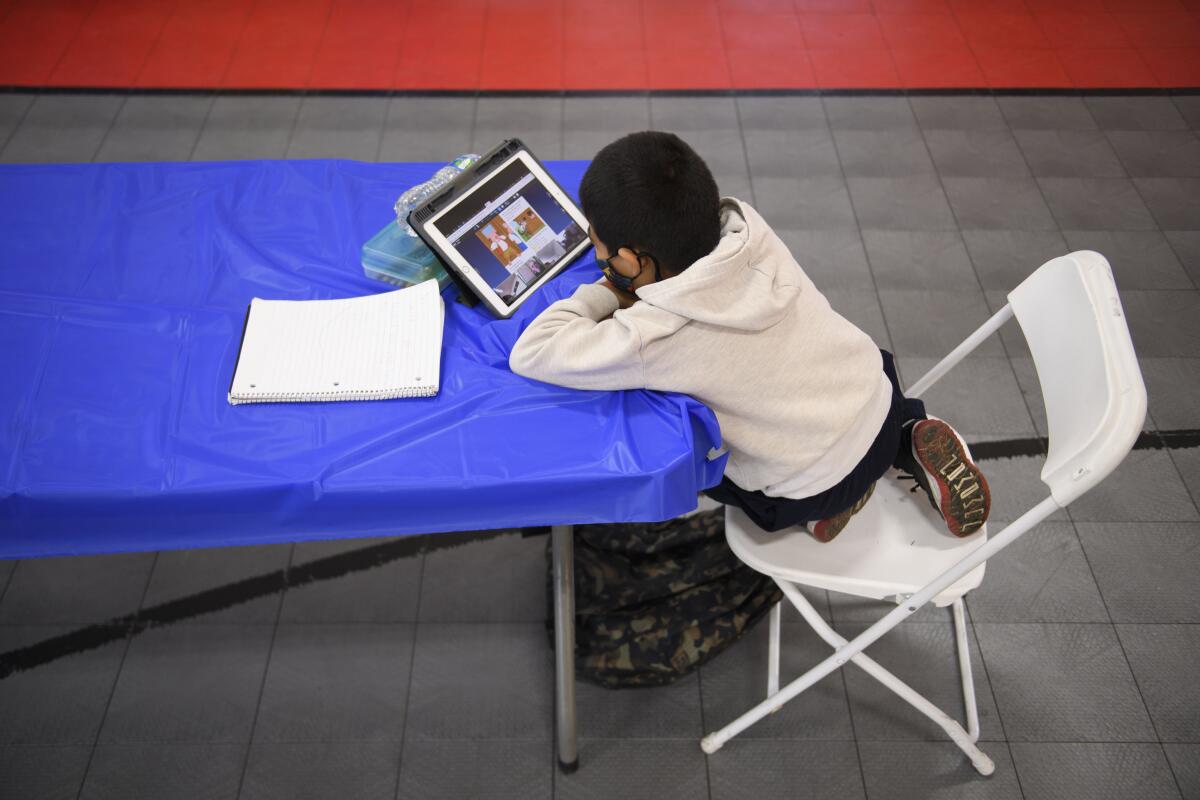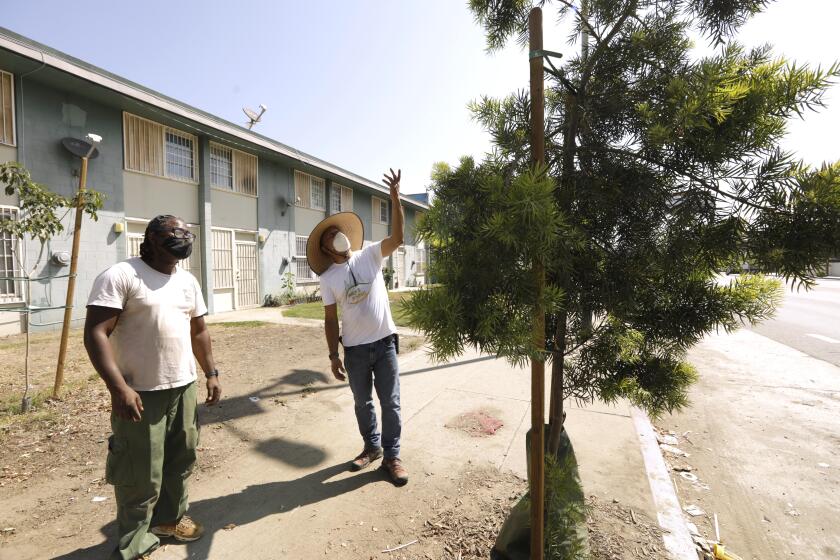More Californians are gaining broadband internet access. But Black and Latino households still lag

- Share via
More Californians are gaining access to broadband internet, but Black and Latino households still lag behind their white counterparts, according to an analysis of the latest available American Community Survey data.
The Public Policy Institute of California, which recently presented the findings, noted that the U.S. Census Bureau survey paints a picture of expanding but unequal access to high-speed internet service in the state at a time when reliable internet service became a necessity for remote work and school.
The data come from the 2020 American Community Survey, which the institute said was limited by “substantial nonresponse bias” because of the COVID-19 pandemic.
“We present these ACS findings cautiously, and we do not make direct comparisons with prior years,” the institute wrote.
According to those “experimental data,” 85% of California households had high-speed internet in 2020 while 94% had internet access of any kind, including cellphone data plans.
Eighty-seven percent of white households had access to high-speed internet, compared with 83% of Black households and 80% of Latino ones.
The divides were not only among racial groups; households headed by adults 65 or older or non-college graduates lagged behind younger and college-educated households. Likewise, households with an annual income below $50,000 were less likely to have access to broadband than wealthier households.
L.A. City is relying on a network of neighborhood tree ambassadors and nonprofits to boost tree canopy in underserved neighborhoods. Will it work?
Additionally, 15% of both Black and Latino households, and 23% of low-income households, reported not having a laptop, desktop or “other computing device” at home.
“Notably, 5% of households with school-age children did not have home access to a device,” the institute wrote.
The access gap is seen in miniature in the Los Angeles Unified School District, where an estimated 20% of students — about 90,000 children out of 450,000 — lack access to broadband entirely or don’t have enough bandwidth to meet academic requirements.
Some students reported that remote schoolwork, in addition to multiple other internet users online at the same time, resulted in disruptions and disconnections.
The district announced a $50-million initiative last month to offer internet access to families who may struggle to pay for it.
Additionally, the institute noted, Federal Communications Commission estimates suggest that 3.7 million households are eligible for federal programs that discount or subsidize broadband access, but that only 1.4 million had enrolled.
“Nonetheless, these programs have helped increase digital access,” the institute wrote.
More to Read
Sign up for Essential California
The most important California stories and recommendations in your inbox every morning.
You may occasionally receive promotional content from the Los Angeles Times.












